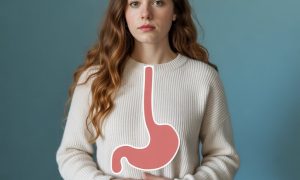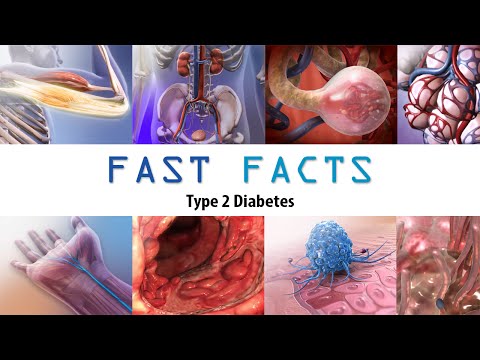Increased snacking in your 40s is caused by hormonal changes (declining estrogen/testosterone), muscle mass loss (3-8% per decade), insulin resistance, poor sleep, and elevated cortisol. Solutions include prioritizing protein (25-35g per meal), resistance training 2-3x weekly, improving sleep quality, and managing stress through mindfulness practices.
Table of Contents
- Why Snacking Increases After 40
- The Hormone-Hunger Connection
- Muscle Mass and Metabolism
- Sleep’s Impact on Snacking
- Stress and Cortisol Effects
- Decoding Your Cravings
- Science-Backed Solutions
- 30-Day Action Plan
Introduction: Understanding Your Body’s Signals
Your increased snacking isn’t about willpower, it’s your body communicating biological needs during a major metabolic transition.
Sarah, 43, noticed she was reaching for snacks three times between lunch and dinner, something that never happened in her 30s. She wasn’t alone. Research shows that appetite regulation changes significantly in your 40s due to multiple physiological factors.
What you’ll learn:
- The 4 biological reasons behind increased snacking after 40
- How hormones affect hunger and cravings
- Evidence-based strategies to stabilize appetite
- A practical 30-day implementation plan
Part 1: Why Snacking Increases After 40 – The Metabolic Shift
Your 40s bring hormonal fluctuations, 3-8% muscle loss per decade, decreased insulin sensitivity, and reduced mitochondrial function, all increasing hunger signals and snacking frequency.
The Four Biological Changes Driving Increased Snacking
1. Hormonal Fluctuation
For Women:
- Perimenopause begins in early-to-mid 40s
- Estrogen and progesterone fluctuate dramatically
- Affects blood sugar regulation, appetite signaling, and fat storage
- Creates intense carbohydrate cravings
For Men:
- Testosterone declines 1% annually after age 40 (source: Harvard Medical School)
- Reduces muscle mass maintenance
- Lowers metabolic rate
- Disrupts appetite regulation
2. Muscle Mass Decline (Sarcopenia)
Key Facts:
- Adults lose 3-8% of muscle mass per decade starting in their 30s
- Muscle burns 6-10 calories per day at rest vs. 2-3 for fat
- Loss accelerates in 40s without intervention
- Directly impacts metabolic rate and blood sugar control
Why This Causes Snacking:
- Lower basal metabolic rate
- Less efficient blood sugar regulation
- More frequent energy crashes
- Body signals for more frequent eating
3. Insulin Sensitivity Changes
According to the National Institutes of Health, insulin resistance increases with age, causing:
- Dramatic blood sugar fluctuations
- Pronounced energy crashes
- Increased cravings for quick energy
- Greater abdominal fat storage
4. Mitochondrial Function Decline
What Happens:
- Cells become less efficient at producing energy from food
- Body signals hunger when experiencing energy production problems
- Increased need for frequent “fuel”
- Reduced overall energy levels
Part 2: The Hormone-Hunger Connection
Estrogen, progesterone, cortisol, ghrelin, and leptin all regulate appetite. In your 40s, these hormones become dysregulated, increasing hunger signals and reducing satiety.
Key Hormones Affecting Snacking in Your 40s
Estrogen: The Master Appetite Regulator
Functions:
- Regulates leptin (satiety hormone)
- Controls fat storage location
- Influences insulin sensitivity
- Modulates serotonin (affects mood and cravings)
When Estrogen Fluctuates:
- Increased carbohydrate cravings
- Difficulty feeling satisfied after meals
- More midline fat storage
- Intensified emotional eating patterns
Progesterone: The Calming Hormone
Effects of Decline:
- Increased anxiety and stress
- Decreased sleep quality
- More stress-related eating
- Intensified comfort food cravings
Cortisol: The Stress-Snacking Trigger
Peak Stress Years:
Your 40s often coincide with:
- Demanding careers
- Caring for children and aging parents
- Financial pressures
- Relationship changes
Cortisol’s Impact:
- Increases appetite for high-calorie foods
- Promotes abdominal fat storage
- Disrupts blood sugar regulation
- Interferes with sleep quality
Ghrelin and Leptin: The Hunger-Fullness Duo
In Your 40s:
- Leptin resistance develops (brain doesn’t receive “full” signals)
- Ghrelin levels increase with poor sleep
- Balance becomes sensitive to stress and lifestyle
- System dysregulation causes constant hunger
The Perimenopause-Snacking Connection
Duration: 4-10 years for most women
Three Major Effects:
- Blood Sugar Rollercoaster
- Fluctuating estrogen affects insulin sensitivity
- Energy crashes in afternoon
- Intense sweet/carb cravings
- Feeling “hangry” quickly
- Sleep Disruption
Poor sleep from night sweats and insomnia:
- Increases ghrelin by 15%
- Decreases leptin by 15%
- Impairs food decision-making
- Increases high-calorie cravings
- Mood Changes
Hormonal fluctuations affect neurotransmitters:
- Increased emotional eating
- Food used for comfort/stress relief
- Reduced impulse control
- Seeking pleasure through eating
Part 3: The Muscle-Metabolism Connection
Muscle mass is metabolically expensive (burns 6-10 calories/day at rest) and regulates blood sugar. Losing muscle in your 40s decreases metabolic rate while appetite signals don’t adjust accordingly.
Why Muscle Mass Matters More Than Ever
Muscle Is Metabolically Expensive
The Numbers:
- 1 pound of muscle = 6-10 calories burned daily at rest
- 1 pound of fat = 2-3 calories burned daily at rest
- Losing 5 pounds of muscle = 30-50 fewer calories burned daily
The Vicious Cycle:
- Lose muscle mass → feel less energetic
- Less physical activity → accelerate muscle loss
- Restrict calories in response → lose more muscle
- Problem worsens
Muscle Regulates Blood Sugar
How It Works:
- Muscle tissue is primary site for glucose disposal
- Adequate muscle = efficient carbohydrate handling
- Stable blood sugar = fewer energy crashes
- Reduced cravings for quick energy
The Protein Priority
Research from Mayo Clinic shows adults over 40 need 1.2-1.6 grams of protein per kilogram of body weight daily.
Why Protein Matters:
- Preserves Muscle Mass
- Combined with resistance training
- Maintains and builds muscle in 40s+
- Prevents metabolic decline
- Increases Satiety
- Most satiating macronutrient
- Keeps you fuller longer
- Reduces between-meal snacking
- Stabilizes blood sugar
- Supports Hormone Production
Provides amino acids for:
- Neurotransmitter production (serotonin, dopamine)
- Hormone synthesis
- Cellular repair
- Immune function
Practical Application:
Instead of: Toast or cereal for breakfast
Try:
- Greek yogurt with berries and nuts (25g protein)
- 3 eggs with vegetables and avocado (21g protein)
- Protein smoothie with greens and nut butter (30g protein)
- Cottage cheese with fruit and seeds (28g protein)
Result: Dramatically reduced mid-morning snacking and stable energy.
Part 4: The Sleep-Snacking Connection
Poor sleep increases ghrelin by 15%, decreases leptin by 15%, and impairs decision-making. Just one night of poor sleep significantly increases snacking and high-calorie food cravings.
Why Poor Sleep Drives Increased Snacking
The Hormonal Impact
One Night of Poor Sleep:
- ↑ Ghrelin (hunger hormone) by 15%
- ↓ Leptin (satiety hormone) by 15%
- ↑ Cortisol (promotes fat storage)
- Disrupted insulin sensitivity
The Brain Impact
Sleep Deprivation Effects:
- Impaired prefrontal cortex (decision-making)
- Activated reward centers
- Less impulse control around food
- High-calorie foods more appealing
- Poor food choices
- Seeking pleasure through eating
The Energy Impact
When Tired, Your Body Seeks:
- Quick energy through sugar/refined carbs
- More frequent eating for alertness
- Larger portion sizes
- Processed, convenient foods
Common Sleep Disruptors in Your 40s
For Women:
- Night sweats and hot flashes
- Hormonal fluctuations affecting sleep architecture
- Increased anxiety and racing thoughts
- Changing sleep needs
For Everyone:
- Increased stress and responsibilities
- Circadian rhythm changes
- Decreased melatonin production
- Sleep apnea (more common with age)
- Medication side effects
The Sleep-Snacking Solution
Optimize Your Sleep Environment:
- Keep bedroom 65-68°F
- Use blackout curtains or eye mask
- Minimize blue light 2 hours before bed
- Consider white noise machine
Support Hormonal Balance:
- Consistent sleep-wake times (even weekends)
- Morning sunlight exposure
- No caffeine after noon
- Magnesium supplementation (consult healthcare provider)
Address Night Sweats:
- Layer bedding for temperature adjustment
- Moisture-wicking sleepwear
- Ice water bedside
- Discuss hormone therapy with doctor if severe
Part 5: Stress, Cortisol, and Comfort Eating
Chronic stress elevates cortisol, which increases appetite for high-calorie foods, promotes abdominal fat storage, disrupts blood sugar, and interferes with sleep, creating a vicious snacking cycle.
The Stress-Snacking Spiral
Peak Stress Years (40s):
- Managing demanding careers
- Caring for children AND aging parents
- Facing financial pressures
- Navigating relationship changes
- Dealing with health concerns
How Cortisol Drives Snacking
Immediate Effects
- Increases appetite and food-seeking behavior
- Creates cravings for high-calorie, high-fat, high-sugar foods
- Overrides normal satiety signals
- Promotes eating when not physically hungry
Long-Term Effects
- Promotes abdominal fat storage
- Disrupts blood sugar regulation
- Interferes with sleep quality
- Creates insulin resistance
- Depletes feel-good neurotransmitters
The Emotional Eating Component
In Your 40s, You Might Notice:
- Using food to cope with emotions more than before
- Eating to procrastinate or avoid difficult tasks
- Seeking pleasure through food when other sources feel limited
- Eating out of boredom or restlessness
Breaking the Stress-Snacking Cycle
Mindfulness Practices:
- 5-minute breathing exercises between tasks
- Body scan meditation before meals
- Mindful eating (no distractions)
- Gratitude journaling
Movement for Stress Relief:
- Walking, especially in nature
- Yoga or gentle stretching
- Dancing or joyful movement
- Strength training (reduces cortisol long-term)
Nervous System Regulation:
- Cold water exposure (face dunking, cold showers)
- Humming or singing (activates vagus nerve)
- Progressive muscle relaxation
- Time with loved ones
Boundary Setting:
- Learning to say no
- Delegating tasks
- Asking for help
- Protecting personal time
Part 6: What Your Cravings Are Really Telling You
Specific cravings signal nutrient deficiencies, blood sugar imbalances, or emotional needs. Chocolate often means magnesium deficiency; salty foods suggest mineral needs; sweets indicate blood sugar crashes.
Decoding Common Cravings
Craving: Chocolate
Possible Meanings:
- Magnesium deficiency (very common in women)
- Need for mood boost (chocolate affects serotonin)
- Blood sugar imbalance
- Stress or emotional comfort need
Better Response:
- Dark chocolate 70%+ cacao with nuts
- Magnesium-rich foods (pumpkin seeds, spinach, almonds)
- Cacao nibs in yogurt
- Magnesium supplementation (consult doctor)
Craving: Salty, Crunchy Foods
Possible Meanings:
- Mineral deficiency (sodium, potassium)
- Stress response (crunching relieves tension)
- Dehydration
- Adrenal fatigue
Better Response:
- Salted nuts or seeds
- Vegetables with hummus
- Olives or pickles
- Mineral-rich bone broth
Craving: Sweets and Carbs
Possible Meanings:
- Blood sugar crash
- Insufficient protein at meals
- Serotonin depletion
- Poor sleep
- Hormonal fluctuations
Better Response:
- Fruit with nut butter
- Greek yogurt with honey
- Protein smoothie with banana
- Balanced meal with complex carbs
Craving: Cheese and Creamy Foods
Possible Meanings:
- Need for fat and satisfaction
- Calcium deficiency
- Desire for comfort
- Insufficient calories overall
Better Response:
- Full-fat dairy if tolerated
- Avocado
- Nuts and nut butters
- Coconut products
Part 7: Science-Backed Solutions That Actually Work
The most effective strategies are: eating 25-35g protein per meal, resistance training 2-3x weekly, prioritizing 7-9 hours sleep, managing stress through mindfulness, and supporting hormones through nutrition.
Strategy 1: Optimize Meal Timing and Composition
The Protein-First Approach
Benefits:
- Stabilizes blood sugar
- Increases satiety
- Preserves muscle mass
- Reduces overall calorie intake naturally
Target Goals:
- 25-35 grams protein per meal
- Protein within 1 hour of waking
- Protein before carbohydrates at each meal
The Balanced Plate Method
Structure:
- ½ plate: non-starchy vegetables
- ¼ plate: quality protein
- ¼ plate: complex carbohydrates
- Healthy fat source (avocado, olive oil, nuts)
Results:
- Sustained energy
- Essential nutrients
- Stable blood sugar
- Increased meal satisfaction
Strategy 2: Strategic Snacking (When You Need It)
When Snacking Helps:
- Prevents blood sugar crashes
- Maintains energy levels
- Supports muscle maintenance
- Prevents overeating at meals
Smart Snack Combinations:
Protein + Fiber:
- Apple with almond butter
- Vegetables with hummus
- Berries with cottage cheese
- Hard-boiled eggs with cherry tomatoes
Protein + Healthy Fat:
- Greek yogurt with walnuts
- Cheese with olives
- Smoked salmon with avocado
- Nuts and seeds mix
The 3-Hour Rule:
If genuinely hungry 3+ hours after a balanced meal, a snack is appropriate. If hungry sooner, your meal lacked sufficient protein or fat.
For more nutritious snack ideas that satisfy cravings while supporting your metabolic health, check out our guide to 30 healthy snacks that help you beat junk food cravings.
Strategy 3: Support Your Changing Hormones
Nutrition for Hormonal Balance
Phytoestrogens (Balance Estrogen):
- Flaxseeds: 1-2 tablespoons ground daily
- Organic soy products (fermented preferred)
- Legumes
- Whole grains
Healthy Fats (Hormone Production):
- Omega-3s: fatty fish, walnuts, chia seeds
- Monounsaturated fats: olive oil, avocados
- Saturated fats in moderation: coconut oil, grass-fed butter
Cruciferous Vegetables (Estrogen Metabolism):
- Broccoli, cauliflower, Brussels sprouts
- Kale, cabbage, bok choy
- Target: 1-2 servings daily
Blood Sugar Stabilizers:
- Cinnamon (improves insulin sensitivity)
- Apple cider vinegar (before meals)
- Chromium-rich foods (broccoli, green beans)
- Fiber: 25-35 grams daily
Strategy 4: Build and Maintain Muscle Mass
According to Cleveland Clinic, resistance training is essential for metabolic health in your 40s.
Resistance Training Protocol
Minimum Requirements:
- 2-3 sessions per week
- Focus on compound movements (squats, deadlifts, presses)
- Progressive overload (gradually increase weight)
- Adequate recovery between sessions
Benefits Beyond Metabolism:
- Improved bone density
- Better insulin sensitivity
- Enhanced mood and cognitive function
- Increased confidence and body image
Protein Timing:
- Consume protein within 2 hours post-workout
- Distribute protein evenly across meals
- Consider protein before bed for overnight muscle repair
Strategy 5: Prioritize Sleep Quality
Sleep Hygiene Essentials
Consistency:
- Same bedtime and wake time daily (even weekends)
- 7-9 hours sleep opportunity
- Gradual wind-down routine
Environment:
- Cool (65-68°F), dark, quiet bedroom
- Comfortable mattress and pillows
- Remove electronic devices
- Blackout curtains
Pre-Sleep Routine:
- No caffeine after 2 PM
- Light dinner 2-3 hours before bed
- Magnesium supplement (if doctor-approved)
- Relaxation practices (reading, gentle stretching)
Strategy 6: Manage Stress Effectively
Daily Stress Management
Morning:
- 5-10 minutes meditation or breathing
- Morning sunlight exposure
- Movement (walk, yoga, stretching)
- Protein-rich breakfast
Throughout Day:
- Regular breaks from work
- Brief walks between tasks
- Hydration (often mistaken for hunger)
- Boundary setting
Evening:
- Digital sunset (screens off 1-2 hours before bed)
- Gentle movement or stretching
- Connection with loved ones
- Reflection or journaling
Stress-Reducing Practices:
- Regular exercise (reduces cortisol long-term)
- Time in nature
- Creative activities
- Social connection
- Professional support (therapy, coaching)
Part 8: Your 30-Day Action Plan
Implement changes gradually over 4 weeks: Week 1 focuses on protein and awareness, Week 2 on blood sugar stabilization, Week 3 on stress and sleep, Week 4 on movement and integration.
Step 1: Assess Your Current Situation (Days 1-3)
Track for Awareness (Not Restriction):
Monitor for 3-5 days:
- When you feel hungry or reach for snacks
- Emotional state during eating
- Energy levels throughout day
- Sleep quality
- Stress levels
Look for Patterns:
- Do you snack at same times daily?
- Are emotions triggering eating?
- Does poor sleep correlate with more snacking?
- Are meals balanced and satisfying?
Step 2: Identify Your Primary Challenge
Pattern 1: The Blood Sugar Rollercoaster
Symptoms:
- Energy crashes mid-morning or afternoon
- Intense cravings for sweets
- Feeling “hangry” frequently
Solution Focus:
- Increase protein at meals
- Add healthy fats
- Reduce refined carbohydrates
- Eat regularly (every 3-4 hours)
Pattern 2: The Stress Snacker
Symptoms:
- Eating when anxious, bored, or overwhelmed
- Mindless eating while working
- Using food for comfort
Solution Focus:
- Stress management techniques
- Mindful eating practices
- Alternative coping strategies
- Professional support if needed
Pattern 3: The Sleep-Deprived Snacker
Symptoms:
- Poor sleep quality
- Increased hunger and cravings
- Afternoon energy crashes
- Reliance on caffeine and sugar
Solution Focus:
- Sleep hygiene improvements
- Earlier bedtime
- Address sleep disruptors
- Medical evaluation if needed
Pattern 4: The Hormone-Driven Snacker
Symptoms:
- Cyclical hunger patterns
- Intense cravings at certain times
- Night sweats affecting sleep
- Mood swings and irritability
Solution Focus:
- Hormone-supporting nutrition
- Medical consultation
- Stress reduction
- Sleep optimization
Step 3: The 30-Day Implementation Plan
Week 1: Awareness and Foundation (Days 1-7)
Daily Actions:
- Start day with 25-30g protein within 1 hour of waking
- Track hunger, energy, emotions (without judgment)
- Establish consistent sleep and wake times
- Take 10-minute walk after lunch
Focus: Understanding patterns without changing everything at once.
Week 2: Blood Sugar Stabilization (Days 8-14)
Daily Actions:
- Include protein at every meal (25-30g)
- Add healthy fat to each meal
- Reduce refined carbohydrates
- Drink 8 glasses of water
Focus: Creating stable energy throughout the day.
Week 3: Stress and Sleep (Days 15-21)
Daily Actions:
- Implement one stress management technique daily
- Create 30-minute wind-down routine before bed
- Limit caffeine to morning only
- Practice 5 minutes of deep breathing
Focus: Supporting nervous system and improving sleep quality.
Week 4: Movement and Integration (Days 22-30)
Daily Actions:
- Begin resistance training (2-3x weekly)
- Continue all previous habits
- Evaluate what’s working
- Adjust strategies as needed
Focus: Building sustainable practices and celebrating progress.
Step 4: Monitor and Adjust
Positive Signs You’re on Track:
- More stable energy throughout day
- Reduced intense cravings
- Better sleep quality
- Improved mood and stress resilience
- Feeling satisfied after meals
- Natural reduction in snacking frequency
When to Seek Professional Support:
- Persistent sleep issues despite lifestyle changes
- Severe hormonal symptoms
- Disordered eating patterns
- Inability to manage stress
- Underlying health conditions
Part 9: The Mindset Shift That Changes Everything
Shift from “my body is betraying me” to “my body is communicating important information.” This transition requires adaptation, not willpower.
From Fighting to Partnering With Your Body
Old Paradigm:
- “My body is betraying me”
- “I need more willpower”
- “I should be able to control this”
- “Something is wrong with me”
New Paradigm:
- “My body is communicating important information”
- “I can work with my biology, not against it”
- “This is a natural transition requiring adaptation”
- “I can support my body through this change”
Embracing the Wisdom of Your 40s
Opportunities This Decade Offers:
Deepen Body Awareness:
- Distinguish physical from emotional hunger
- Understand unique hormonal patterns
- Recognize body’s stress signals
- Honor changing needs
Prioritize Self-Care:
- Make sleep non-negotiable
- Invest in stress management
- Build strength and vitality
- Seek support when needed
Release Perfectionism:
- Let go of how things “used to be”
- Accept body’s needs have changed
- Practice self-compassion
- Focus on progress, not perfection
Cultivate Resilience:
- Build sustainable habits
- Develop flexible strategies
- Learn from setbacks
- Celebrate small wins
Conclusion: Honoring Your Body’s Wisdom
Increased snacking in your 40s is your body’s message about a profound metabolic transition, not a character flaw requiring willpower.
The Real Solution
Your body is navigating changes affecting hormones, metabolism, muscle mass, sleep, and stress response. Support it through:
- Adequate protein (25-35g per meal) to preserve muscle and stabilize blood sugar
- Quality sleep (7-9 hours) to normalize hunger hormones
- Stress management (daily practices) to reduce cortisol-driven eating
- Resistance training (2-3x weekly) to maintain metabolic health
- Hormone support through nutrition and lifestyle
- Self-compassion as you navigate this transition
Sarah’s Transformation
Three months after understanding what her body was telling her, Sarah:
- Starts day with protein-rich breakfast sustaining her until lunch
- Recognizes when truly hungry versus stressed or tired
- Supports changing hormones through nutrition and lifestyle
- Builds strength through resistance training
- Prioritizes sleep as non-negotiable
- Practices self-compassion through ups and downs
Most importantly: She stopped fighting her body and started partnering with it.
Your Next Steps
Your 40s can be a decade of incredible strength, wisdom, and vitality, when you understand what your body needs and provide appropriate support.
Your body isn’t betraying you. It’s inviting you to deeper self-care, awareness, and partnership.
The question isn’t “How do I stop snacking?” but rather “How can I support my body through this transition in a way that honors its wisdom and needs?”
You have the knowledge. You have the tools. Now take the first step.
Additional Resources
Professional Support
Recommended Consultations:
- Functional medicine practitioner for personalized hormone assessment
- Registered dietitian specializing in women’s health
- Certified personal trainer for resistance training guidance
- Therapist or coach for stress management
Recommended Testing
Essential Labs:
- Comprehensive metabolic panel
- Hormone levels (estrogen, progesterone, testosterone, thyroid)
- Vitamin D, B12, and iron levels
- Fasting insulin and glucose
Healthy Snacking Guide
Need practical snack ideas? Check out our 30 healthy snacks that help you beat junk food cravings for nutritious options that keep you satisfied.
Community Support
Join our Billboard Health community for ongoing support, recipes, and strategies for thriving in your 40s and beyond.
Frequently Asked Questions (FAQ)
Why am I suddenly snacking more in my 40s?
Increased snacking in your 40s is caused by four main factors: hormonal changes (declining estrogen/testosterone), muscle mass loss (3-8% per decade), decreased insulin sensitivity, and reduced mitochondrial function. These changes affect hunger hormones, blood sugar regulation, and energy production.
How much protein should I eat daily in my 40s?
Adults over 40 should consume 1.2-1.6 grams of protein per kilogram of body weight daily, distributed across meals (25-35g per meal). This helps preserve muscle mass, stabilize blood sugar, and increase satiety.
Can resistance training really reduce snacking?
Yes. Resistance training 2-3 times weekly builds muscle mass, which improves insulin sensitivity, stabilizes blood sugar, and increases metabolic rate—all reducing the need for frequent snacking.
How does sleep affect snacking?
Poor sleep increases ghrelin (hunger hormone) by 15% and decreases leptin (satiety hormone) by 15%. It also impairs decision-making and increases cravings for high-calorie foods.
What’s the best way to manage stress-related snacking?
Implement daily stress management practices: 5-10 minutes morning meditation, regular movement, boundary setting, and nervous system regulation techniques like deep breathing or cold water exposure.
Are my cravings telling me something?
Yes. Chocolate cravings often indicate magnesium deficiency; salty foods suggest mineral needs; sweets indicate blood sugar crashes; creamy foods suggest need for healthy fats or insufficient calories.
How long does it take to see results?
Most people notice improved energy and reduced cravings within 2-3 weeks of implementing protein-first meals, better sleep, and stress management. Full metabolic adaptation takes 8-12 weeks.
Should I see a doctor about increased snacking?
Consult a healthcare provider if you experience: severe hormonal symptoms, persistent sleep issues despite lifestyle changes, disordered eating patterns, or inability to manage stress.
Medical Disclaimer: This article is for informational purposes only and does not constitute medical advice. Always consult with qualified healthcare providers before making significant changes to your diet, exercise routine, or health regimen.













